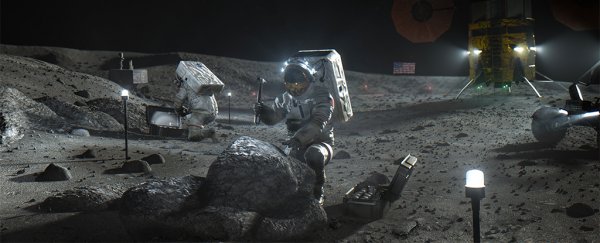It's fair to say we humans haven't done a great job of looking after our home planet, and now NASA has published updated guidelines to try and ensure that we don't end up having a negative impact on the celestial bodies we visit next.
These guidelines are known as planetary protection policies – instructions for preventing other planets from catching our bugs and indeed for preventing any contamination coming back the other way as well. Future NASA missions will have to abide by these recommendations before they get the all clear.
The updates are actually relaxing some of the previous rules, however, not tightening them – it's long been argued that the guidelines have to change for crewed missions to proceed, as putting humans on the surface of the Moon or Mars without any microbes at all going along with them is just about impossible.
The first policy to get an update is the catchily named NID 8715.128 (NID stands for NASA Interim Directives), which covers human and robot missions to the Moon – or "space vehicles intended to land, orbit, flyby, or otherwise encounter Earth's Moon", as the document itself puts it.
Part of the new report specifies different approaches to different parts of the Moon. Areas of greater scientific interest – such as permanently shadowed regions (PSRs) where water might be lurking, or the area where the Apollo spacecraft landed. These sites can still be visited, but under more controlled conditions (so a complete biological inventory will be required for these trips, for example).
"We are enabling our important goal of sustainable exploration of the Moon while simultaneously safeguarding future science in the permanently shadowed regions," says Thomas Zurbuchen, the Associate Administrator of NASA's Science Mission Directorate.
"These sites have immense scientific value in shaping our understanding of the history of our planet, the Moon and the Solar System."
The second policy to be refreshed is referenced as NID 8715.129, and lays the foundation for human missions to Mars. It doesn't go into a great deal of detail, but it does set out a framework for new directives – ones that allow humans to set foot on the Red Planet while still protecting it.
Despite the best efforts of the Curiosity rover, there's still a huge amount about Mars that we don't know, and that makes it difficult for NASA to figure out what precautions need to be taken. Those preparations are now being sped up.
"It's vital that NASA's regulations remain synchronised with our capabilities and plans," says NASA Administrator Jim Bridenstine.
"This NID will enable the human exploration of Mars, creating new opportunities for awe inspiring science and innovative commercial activities. I believe science and human exploration are complementary endeavours and I'm excited to see these policy reforms open up a new era of discovery."
The NID commits NASA to a process of investigating quarantine and waste disposal systems that can protect the Martian environment as much as possible, and to coming up with technologies to monitor the impact we're having on the surface – so future changes can be made if necessary.
We're excited about where space exploration might lead us next, and these new directives should mean our journeys are as safe as possible as well – both for our crews and anything else we might meet.
